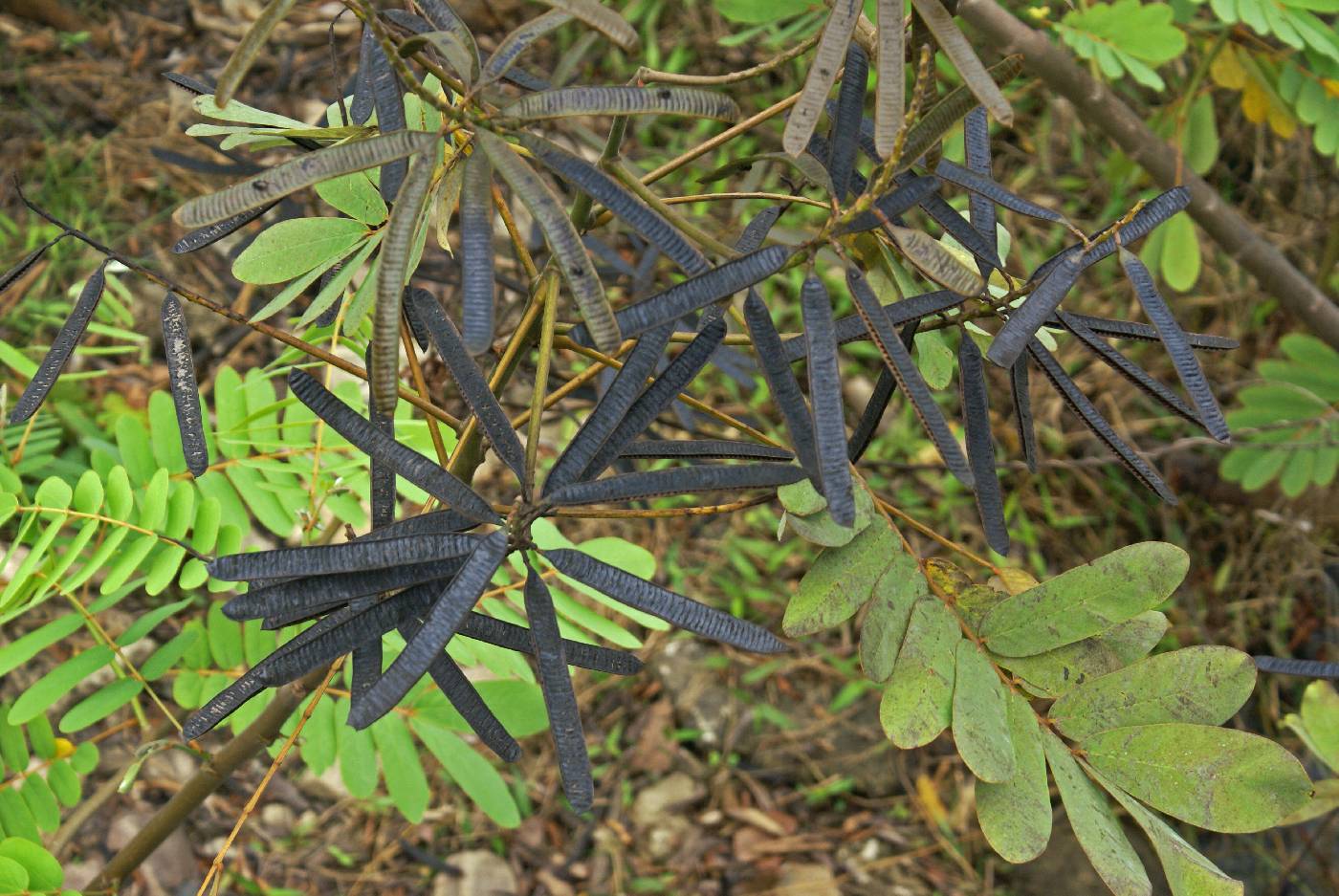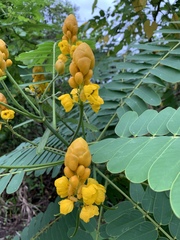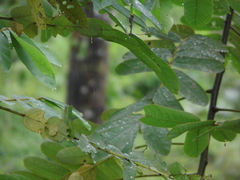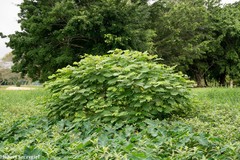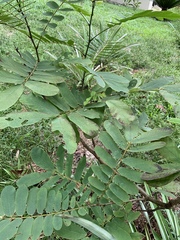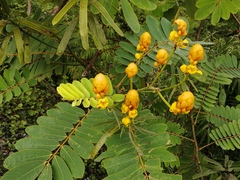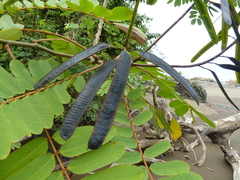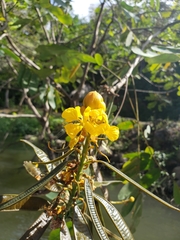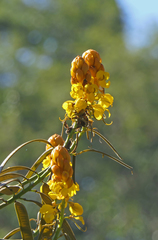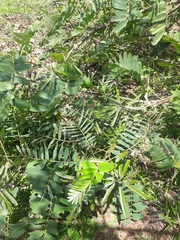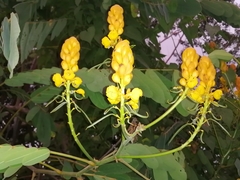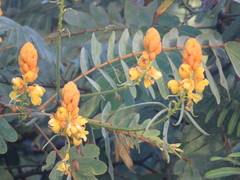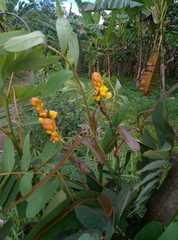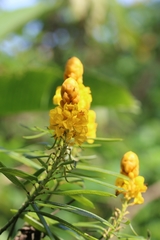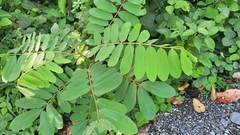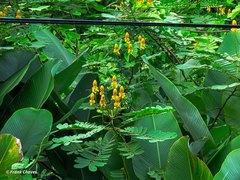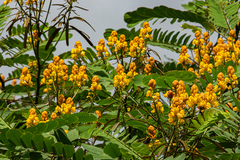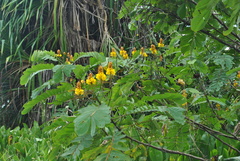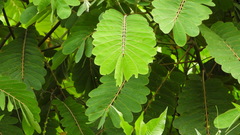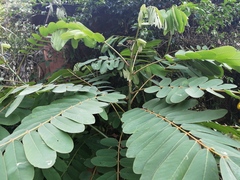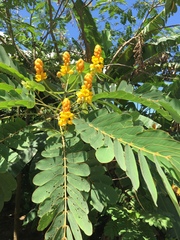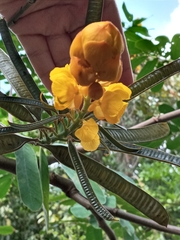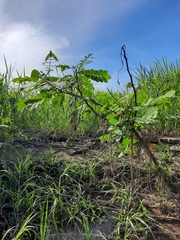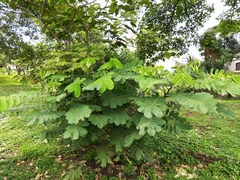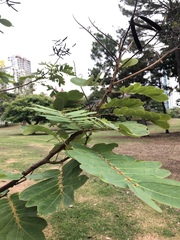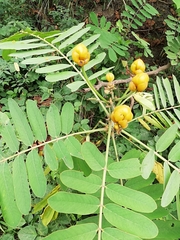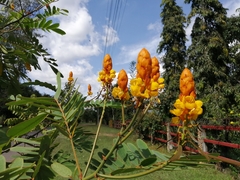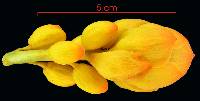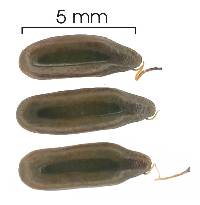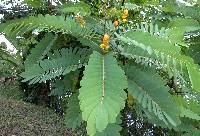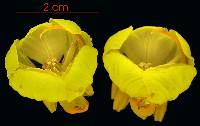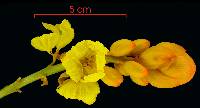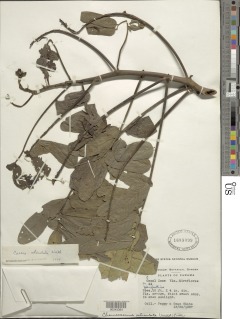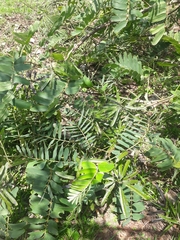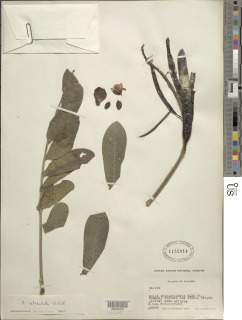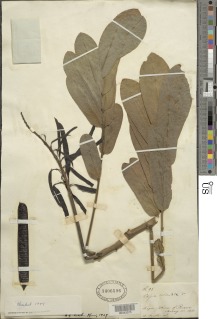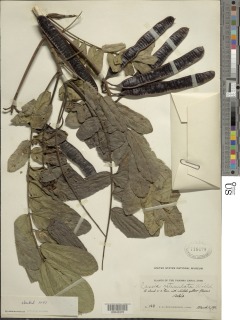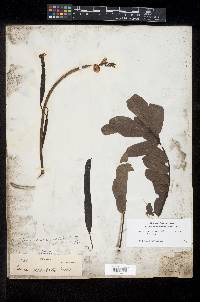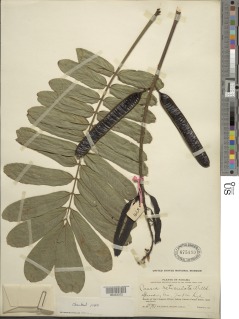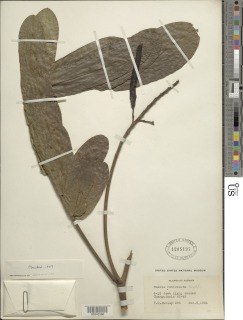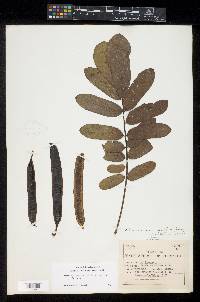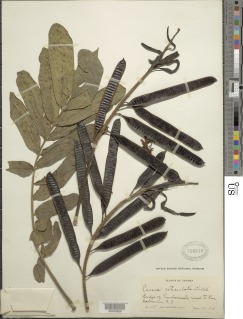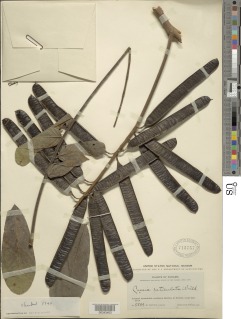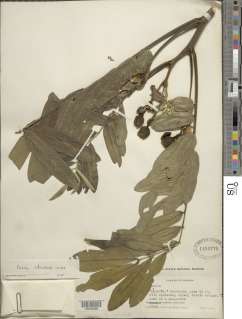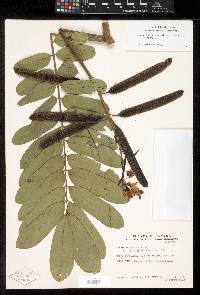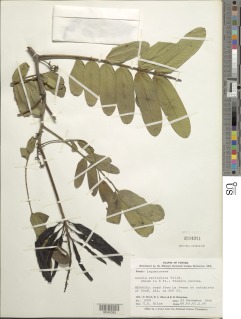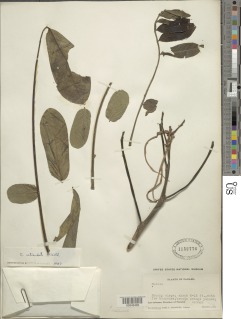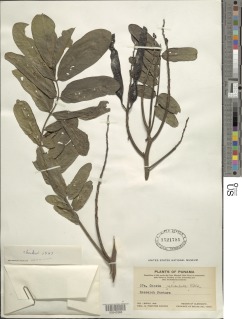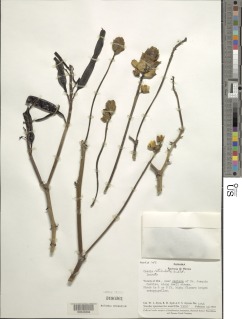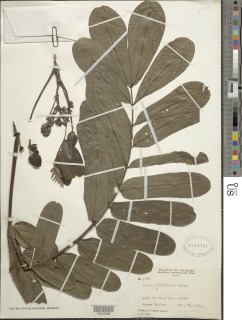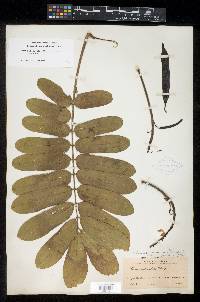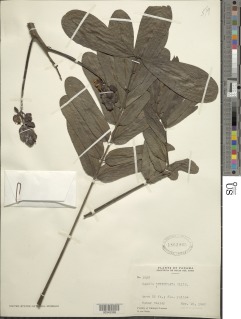

|
|
|
|
Family: Fabaceae
Laureño, more...piria
[Cassia reticulata Willd.] |
Descripción: Árbol de 2 a 8 m de alto. Tronco ramificado a baja altura. Copa redondeada. Corteza exterior negra o gris. Hojas paripinnadas y alternas, con 7 a 13 pares de folíolos, opuestos en el raquis, los basales reducidos en tamaño. Folíolos de 7-18 x 3-8 cm, oblongos u obovados, con ápice obtuso o ligeramente emarginado, bordes enteros y base redondeada. Estípulas deciduas. Pecíolo de 3-13 cm de largo y pulvinado en la base. Inflorescencias en racimos o panículas terminales, cubiertas por brácteas de color amarillo anaranjadas. Frutos en legumbres, de 10-16 cm de largo, negros y lustrosos, con costillas transversales sobre cada semilla. Datos Ecológicos: La especie crece a bajas elevaciones, en lugares secos, húmedos o muy húmedos. En Panamá se encuentra en las provincias de Bocas del Toro, Coclé, Darién, Herrera, Los Santos y Panamá. Común a orillas de ríos y riachuelos, también en áreas abiertas y pantanosas. Florece y fructifica de septiembre a marzo. Especies Parecidas: A menudo se confunde con LK sennal Senna alata LK2 , pero S. alata tiene los frutos alados hasta la mitad de cada valva y el ala es ligeramente crenulada. Usos: Los tallos y hojas jóvenes del laureño son trituradas y se utilizan para curar granos e infecciones de la piel. Tree, usually 2-4 (6) m tall; branchlets puberulent, pithy. Leaves paripinnate, mostly 20-50 cm long; petioles with prominent basal pulvinus; leaflets in 9-14 pairs, oblong, acute and downturned at apex, obtuse-rounded at base, 4-13 cm long, 1.5-5.5 cm wide, usually densely pubescent on both surfaces, especially below. Racemes terminal and upper-axillary; flowers subtended in bud by a yellow, ovate, caducous bract ca 2 cm long; pedicels 2-5 mm. long; sepals elliptic, to 13 mm long; petals 5, yellow, conspicuously dark-veined, rounded at apex and turning inward at anthesis' obtuse at base, ca 16 mm long, with a slender claw ca 1 mm. long; stamens 10, the outer 2 large, fertile, with the anthers prominently curved, ca 11 mm. long, with 2 apical pores and lateral slits (sometimes not opening), each loculus almost filled with a juicy matrix, the 4 medial stamens much smaller, 4 stamens aborted; pistil puberulent, held between the 2 large stamens; style slender, recurved, the stigmatic surface sunken. Legumes flattened, to 15 cm long and 2 cm wide, marginally ribbed, breaking into many, 1-seeded, linear parts at maturity. Wetmore & Abbe 166. Occasional in marshy areas near Frijoles and elsewhere in the isthmus, but not seen recently on BCI. On the basis of old collections, it was once common on the island, but apparently prefers more disturbed, swampy areas than now exist. Flowers mostly in the dry season; Allen (1956) reported the species to flower from late August to February. The fruits persist for a long time. Time of dehiscence is not known. Mexico to Bolivia and Brazil. In Panama, known from tropical moist forest in the Canal Zone, Bocas del Toro, Colon, Los Santos, Herrera, Panama, and Darien and from tropical wet forest in Coclé. Bocas Species Database Characteristics: Tree |
|
|
|

